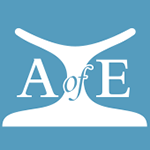The enigmatic rectangular earthwork enclosure, is sometimes known as the “Hyksos camp”, which dates from the late Middle Kingdom to the Second Intermediate Period has an unknown purpose. It has been postulated that the purpose is a military fortification, potentially for the Hyskos, but equally it could be religious. A colossal statue of Ramesses II suggest that a temple of that date was built in the north-eastern part of the enclosure, while a temple of Ramesses III of the 20th Dynasty, decorated with colourful faience tiles, was erected in the western part. Finds from the palace include faience tiles with images of flowers, plants, flowers, rosettes, animals and hieroglyph motifs.
Outside the enclosure, the temple and town that was granted to the exiled Jewish Priest Onias by Ptolemy VI Philometor is located. There are cemeteries dating from the Middle Kingdom onwards at the site.
Naville, Edouard and F. Ll. Griffith 1890. The mound of the Jew and the city of Onias: Belbeis, Samanood, Abusir, Tukhel Karmus. 1887 / The antiquities of Tell el Yahûdîyeh, and miscellaneous work in Lower Egypt during the years 1887-1888. Memoir of the Egypt Exploration Fund 7. London: Kegan Paul, Trench, Trübner.
